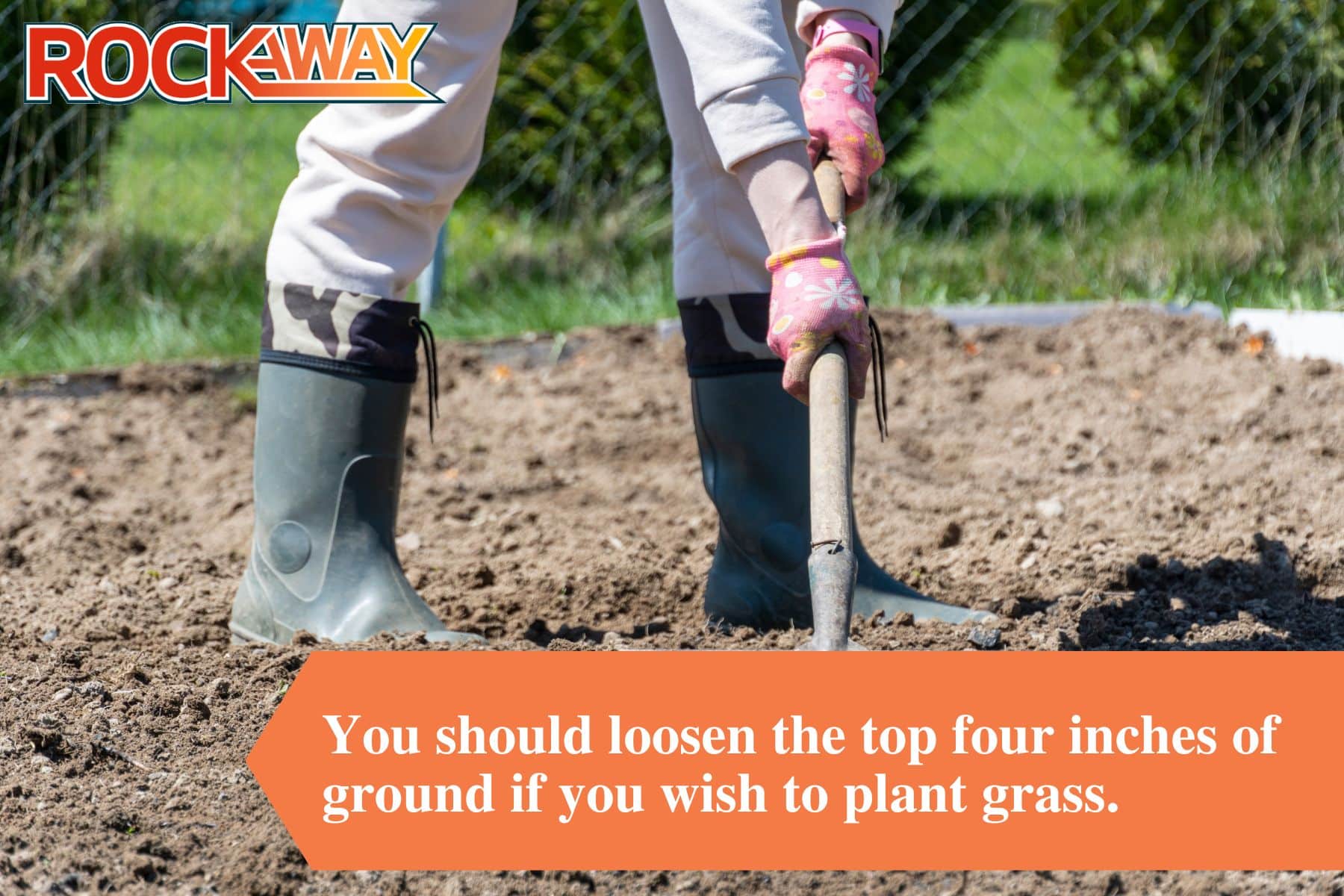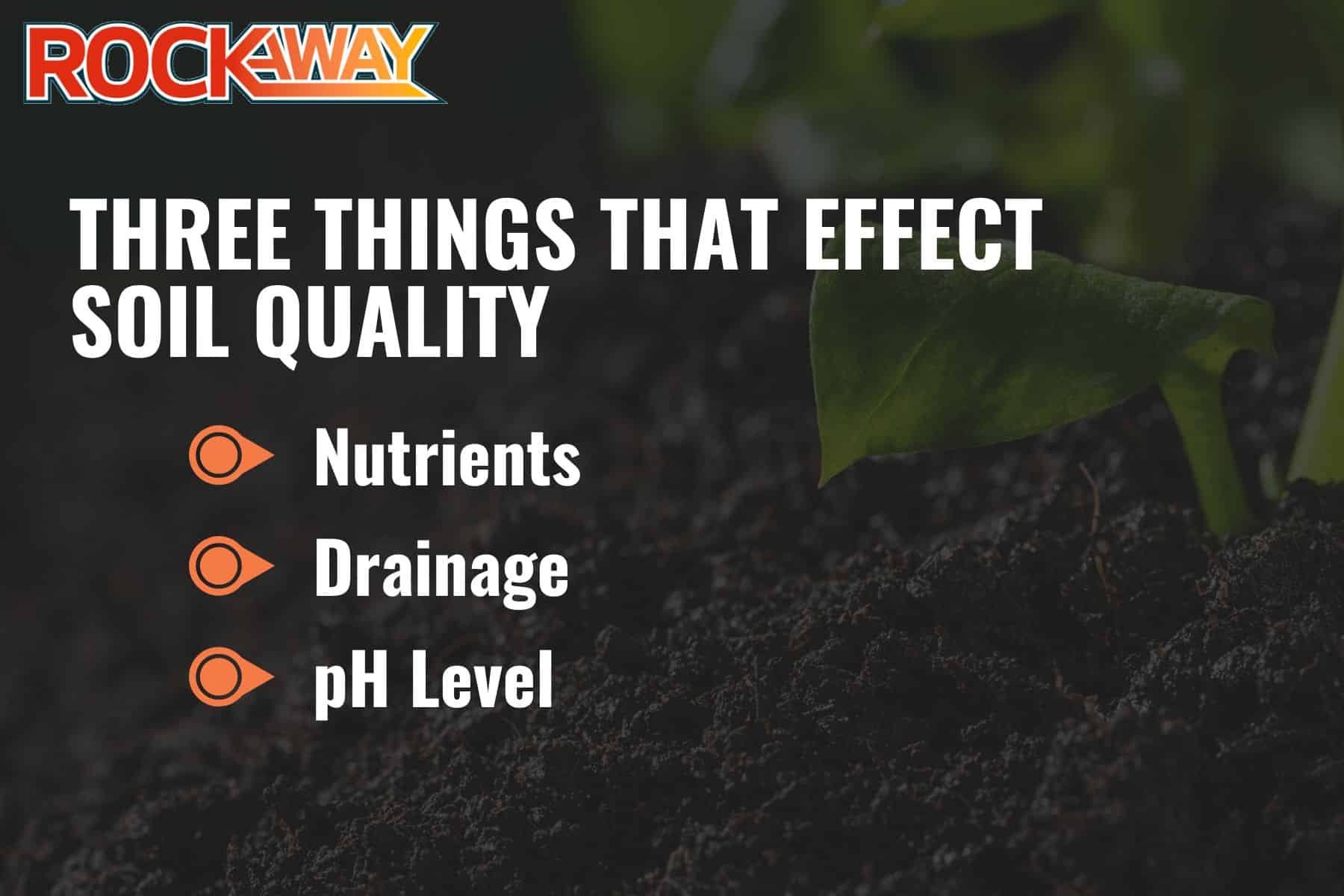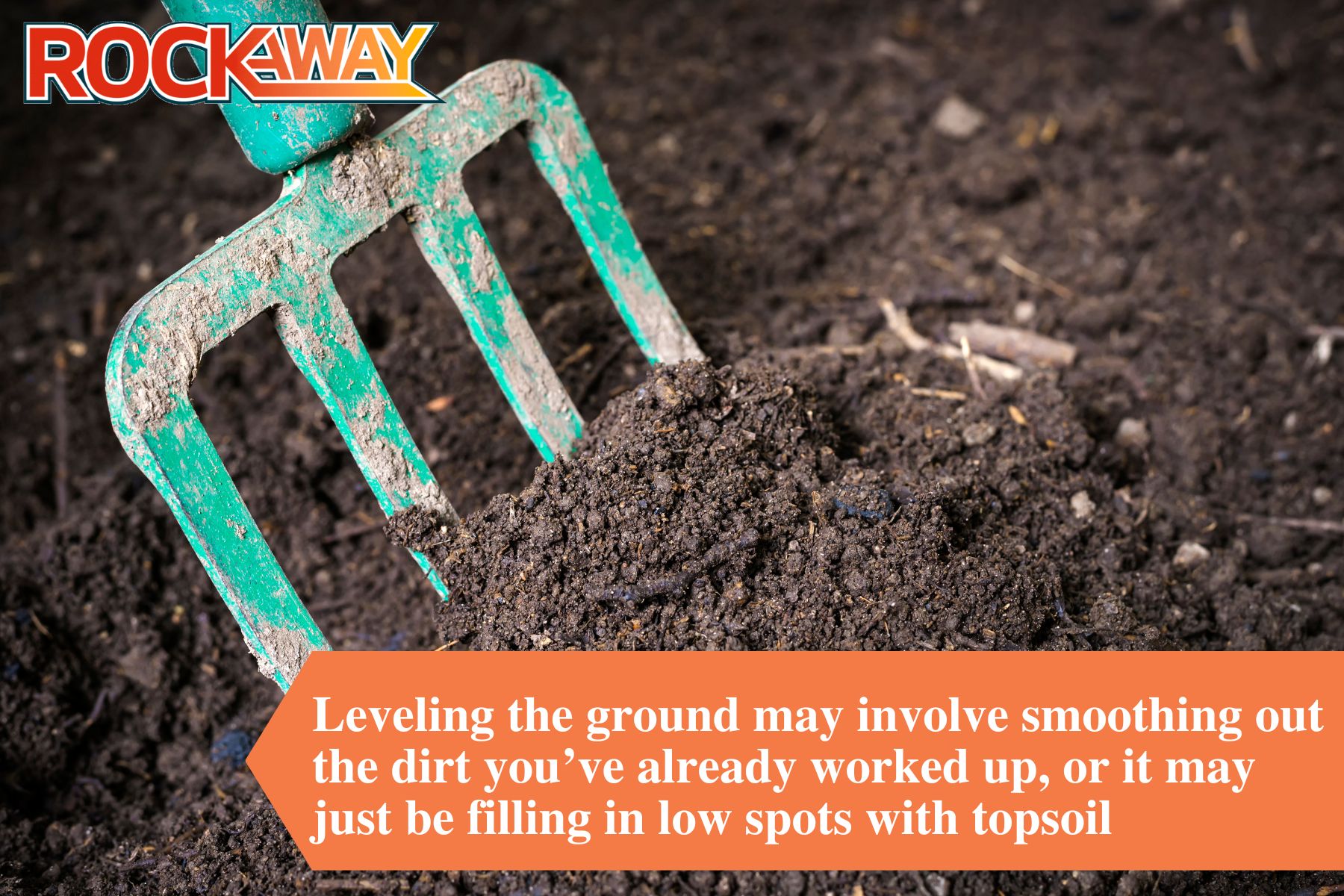Five Essential Steps to Prepare Your Soil for Landscaping
Beautiful landscaping matters.
If your lawn is an uninspiring landscape of dirt and weeds, something must be done. But remember, your lawn is probably struggling due to issues in the soil. To get the desired results, you must properly prepare your soil before planting new grass.
Here at Ideal Rockaway, we know that with the right preparation and tools, even a massive job like preparing soil can be made simple! That’s why we developed a landscape rake to quickly and effectively remove rocks and other debris as you prepare lawn soil for planting grass, a garden, landscaping, or whatever you dream of doing with your backyard space.
Whether you’re a homeowner, a landscape company owner, or anyone else tasked with improving a lawn, we’ve written this article to explain the five steps necessary to prepare the soil for planting.
Quick Note: depending on the state of your lawn, some steps may be optional. We’ll go through them individually, explaining how to tell if your soil needs this step and the various methods of achieving it.
Step 1: Remove Grass
Unless you’re starting with a bare patch of dirt, the first soil preparation step is to remove the existing vegetation in the area you hope to re-plant, so you have a clean slate to work with.
Start by removing larger things like shrubs or stumps, then move on to grass and weed removal. The most common grass removal method is to kill everything with roundup, but if you’re trying to avoid harsh chemicals, you can rent a sod cutter or kill your grass with plastic sheeting in a process called solarization.
If you’re dealing with a lot of tall grass and weeds, remove as much of it as possible with a lawn mower or string trimmer.
Step 2: Loosen the Soil
Unless your soil has recently been worked up, the next step in the soil preparation process is to loosen the dirt. You should loosen the top four inches of ground if you wish to plant grass.

You can use a shovel or garden fork if you’re only working up a small area. Dig into the dirt and work it up, breaking it up into pea-sized pieces.
Unfortunately, doing this job without machinery is extremely labor-intensive! If you’re working up a large piece of ground, it’s better to till the soil with a garden tiller or a tractor-mounted rotary tiller, which you can buy or rent.
On the other hand, if your lawn is uneven and you plan to add several inches of topsoil to even it out, you can skip this step in the areas where you’re adding soil.
Step 3: Remove Rocks and Other Debris
You must remove the rocks and other debris from your lawn to get an even growing surface.
If you’re preparing a small area, you can remove the rocks by raking them out of the soil after you’ve loosened it. However, if you have a lot of rocks and debris in your soil and you’re working on a large area, this becomes a massive headache (and extremely back-breaking work!).
The most efficient way to do this rock removal is to buy or rent a rock removal machine, such as the Rockaway.
The Rockaway is a landscape rake that attaches to your skid steer or tractor and rakes all the rocks and debris out of the soil. No matter the condition of your soil, the robust Rockaway will efficiently screen out the stones, saving you hours and hours of work.
If you’re a landscape company that does soil preparation frequently, it’s worth it to buy the attachment. But for everyday people preparing their personal lawns or garden beds, there are easy rental options available!
Once you’ve successfully screened out rocks and debris, it’s time to supplement your soil so it can grow healthy, flourishing plants.
Step 4: Supplement Your Soil
Have you had trouble growing grass or other plants in your soil? If the plants you want seem to wither and die when you plant them, and if the only things that seem to grow are weeds, you probably have soil problems!
Generally, three things affect soil quality:
- Nutrients: Plants need nutrients from organic matter to grow and thrive.
- Drainage: Plants also need water, but not too much water. If you have clay soil, you’ll struggle with water sitting in the soil instead of draining away, and if you have sandy soil, you’ll struggle with the water draining away too quickly.
- PH level: Some plants grow better in more acidic soil, and some grow better in more alkaline soil.

Adding nutrients
No matter your soil's issues, adding organic matter, such as compost, is always a good idea. You can also add in things such as:
- Leaves
- Grass clippings
- Manure
- Worm castings
- Ground bark
- Vegetable scraps
However, at this stage of preparing your soil for planting, it’s easiest to buy some compost and rake it in.
Improving drainage
Putting compost into your soil will not only add nutrients but will also improve drainage, helping clay soil drain and helping sandy soil retain water.
Doing this will make your lawn healthy enough to grow grass. For other plants, such as fruits, vegetables, flowers, and shrubs, research what is native to your region and what grows well in your soil type.
If you have your heart set on growing things that won’t grow well in your soil type, create raised beds and make your own bed soil.
Adjusting PH level
Ideal PH levels vary depending on what plants you wish to grow. The best plan is to research what you’d like to grow and then test your soil to see if your soil has the correct PH.
Remember:
Like with drainage, you’ll be better off overall if you pick plants that work well in your soil type and create a raised bed if you wish to grow something that needs a lot of soil amendment.
Once you’ve supplemented your soil with compost or whatever you deem necessary to add to your particular soil type, it’s time for the final step to prepare your soil for landscaping!
Step 5: Level the ground
As the final step to preparing your soil before planting grass, ensure your ground is level!
Leveling the ground may involve smoothing out the dirt you’ve already worked up, or it may just be filling in low spots with topsoil.

There are several ways to level the ground. Do what works best for you, but here are some ideas:
- Add topsoil to low spots and level with a 2x4.
- Use a handheld lawn leveling rake to level your soil.
- Use a landscape rake that attaches to a skid steer or tractor. Remember, landscape rakes such as the Ideal Rockaway are not just used to remove rocks. They can also be used to rake compost into the dirt and level the ground!
Now that your ground is level, congrats! It’s time to landscape, plant grass, grow vegetables, or do whatever you dream of doing with your land!
Conclusion
Whether you’re a homeowner or a landscaping company, efficiently preparing soil for landscaping is essential. And one of the most labor-intensive steps you’ll run into during the process is trying to remove rocks from the ground.
If you’re tired of spending hours removing rocks by hand, working with clumsy attachments, or using inefficient rakes that require multiple passes, it’s time to get your hands on a better rock-removal machine.
Look no further than the Rockaway!
With the Rockaway, you can enjoy the following:
- Easy attachment
- Rock removal and soil screening
- A low-profile design
- Cost-effectiveness
- Low maintenance
Want to know more? Get a free quote today!
We can’t wait to hear from you.





